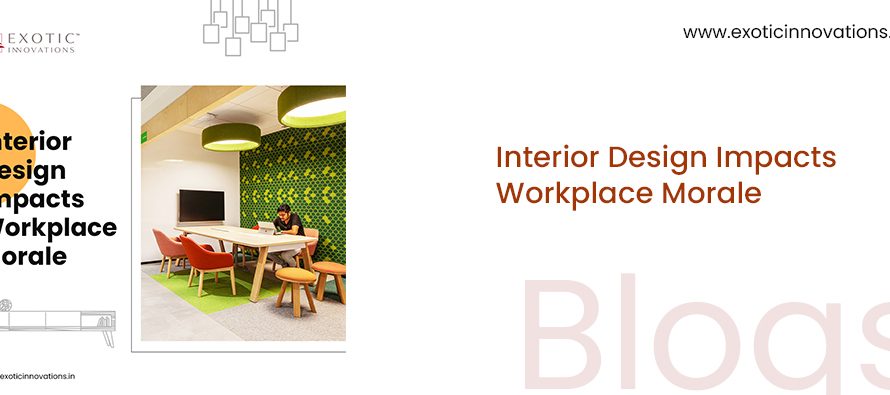It’s raining cats and dogs!
The torrential monsoon rains bring with them not just a drop in the external temperatures but also an internal dip in what can be referred to as ‘brain weather’, leaving little to no space for efficient productivity. Thermal comfort thereby is a critical factor in creating a productive and healthy work environment, for it acts as a catalyst for getting tasks done. Employees who are too hot or too cold are likely to experience discomfort, reduced concentration, and decreased job satisfaction. Organizations can significantly enhance employee well-being and performance by prioritizing thermal comfort in their workspace design and management. When employees experience discomfort due to inappropriate temperature settings, their concentration, satisfaction, and overall work efficiency take a hit. Hence, achieving thermal comfort is not merely a matter of luxury but a necessity for fostering a productive and healthy work environment.
The Importance of Thermal Comfort
Thermal comfort refers to the state of mind that expresses satisfaction with the surrounding environment’s temperature. It is influenced by a combination of factors, including air temperature, humidity, air movement, and the presence of radiant heat sources. When these factors are balanced, employees are more likely to be comfortable, leading to enhanced concentration, better performance, and increased job satisfaction.
Discomfort due to thermal stress can lead to a range of issues, from minor distractions to significant health problems. Employees who are too hot may feel lethargic, irritable, and find it challenging to concentrate. Conversely, those who are too cold may experience discomfort and a lack of motivation. Both scenarios can contribute to a decrease in productivity and overall job satisfaction. Thus, organizations have a vested interest in ensuring that thermal comfort is maintained in the workplace.
A Holistic Approach to Thermal Comfort
Achieving optimal thermal comfort requires a comprehensive approach that includes considerations of building design, HVAC (heating, ventilation, and air conditioning) systems, and interior design. Each of these elements plays a crucial role in creating a comfortable and productive work environment.
Building Design:
The foundation of thermal comfort lies in the design of the building itself. Proper insulation of the building envelope is essential to prevent unwanted heat gain or loss. Insulation materials should be chosen based on their thermal resistance properties, ensuring that they can effectively minimize the transfer of heat. High-performance glazing for windows is another critical component. Such glazing can help regulate solar heat ingress, reducing the need for excessive cooling in the summer and heating in the winter.
The orientation of the building also plays a significant role. By strategically positioning the building to take advantage of natural shading and sunlight, it is possible to reduce the reliance on artificial heating and cooling systems. Additionally, the use of green roofs and walls can provide additional insulation and reduce the urban heat island effect, contributing to a more stable internal temperature.
Advanced HVAC Systems:
The HVAC system is the backbone of maintaining thermal comfort within a workspace. Modern HVAC systems equipped with zone control capabilities allow for precise temperature adjustments in different areas of the workspace. This means that individual preferences and varying heat loads in different parts of the building can be accommodated.
Regular maintenance and upgrades of HVAC systems are essential to ensure they operate efficiently. For instance, the use of energy-efficient chillers, variable speed drives, and advanced control systems can significantly reduce energy consumption while maintaining optimal comfort levels. The integration of smart technologies, such as IoT sensors, can provide real-time data on temperature, humidity, and occupancy, allowing for more responsive and adaptive climate control.
Interior Design Elements:
Interior design is often overlooked in discussions about thermal comfort, yet it plays a pivotal role. The selection of materials with appropriate thermal properties can influence heat absorption and dissipation. For instance, floors made from materials with high thermal conductivity, such as stone or tile, can help regulate heat during hot weather by absorbing and storing coolness from the air conditioning. On the other hand, walls and ceilings should be constructed from materials with low thermal conductivity to minimize heat transfer.
Color schemes can also impact thermal comfort. Lighter colors reflect more sunlight and heat, helping to keep spaces cooler, while darker colors absorb heat and can make a room feel warmer. Window treatments, such as blinds or curtains, can be used to control the amount of sunlight entering a space, further contributing to temperature regulation.
Ventilation is another crucial aspect of interior design. Proper ventilation ensures a continuous supply of fresh air, which can help remove excess heat and humidity. The strategic placement of windows and vents can enhance natural ventilation, reducing the reliance on mechanical systems and promoting a healthier indoor environment.
Benefits of Prioritizing Thermal Comfort
Investing in thermal comfort brings a multitude of benefits for organizations. First and foremost, it leads to improved employee satisfaction. When employees are comfortable, they are more likely to be engaged and motivated, resulting in higher productivity levels. This positive impact on productivity can directly contribute to the organization’s bottom line.
In addition to boosting productivity, thermal comfort can enhance the overall corporate image. Companies that prioritize the well-being of their employees are viewed more favorably by both current and prospective employees. This can improve retention rates and make the organization more attractive to top talent. Furthermore, a comfortable work environment can positively influence client perceptions, potentially leading to stronger business relationships.
Energy efficiency is another significant advantage. By incorporating energy-efficient measures into the design and operation of the workspace, organizations can reduce their energy consumption and operational costs. Advanced HVAC systems, high-performance glazing, and proper insulation contribute to lower energy usage, which translates into financial savings over time. Moreover, reducing energy consumption aligns with sustainability goals and helps minimize the organization’s environmental footprint.
Strategies for Implementing Thermal Comfort
To effectively implement thermal comfort in workspaces, organizations should consider the following strategies:
Conduct Thermal Comfort Assessments: Regular assessments can help identify areas where improvements are needed. This includes evaluating the current performance of HVAC systems, insulation, and building design elements.
Upgrade HVAC Systems: Invest in modern HVAC systems with zone control capabilities and smart technologies. Regular maintenance and upgrades ensure these systems operate efficiently and effectively.
Optimize Building Design: When constructing new buildings or renovating existing ones, prioritize insulation, high-performance glazing, and green building practices. Consider the building’s orientation to maximize natural shading and sunlight.
Enhance Interior Design: Choose materials and color schemes that support thermal comfort. Implement effective window treatments and ventilation strategies to regulate temperature and improve air quality.
Promote Employee Awareness: Educate employees about the importance of thermal comfort and encourage feedback. This can help identify specific comfort needs and preferences, allowing for more targeted adjustments.
Monitor and Adjust: Use IoT sensors and smart technologies to continuously monitor temperature, humidity, and occupancy levels. Make real-time adjustments to ensure optimal comfort.
Prioritizing thermal comfort in workspaces is a strategic decision that aligns with the overall well-being of employees and the sustainability goals of the organization. By carefully considering building design, HVAC systems, and interior design elements, organizations can create workspaces that are not only thermally pleasant but also conducive to optimal performance and employee satisfaction. The investment in thermal comfort pays off through improved productivity, enhanced employee morale, and significant energy savings, ultimately contributing to a more sustainable and successful organization.
Liked our blog? Share your opinion in the comments below!



